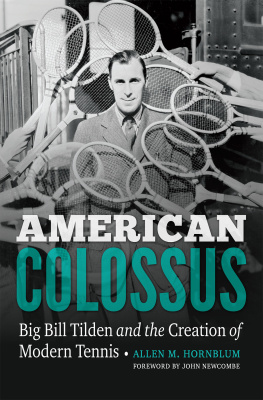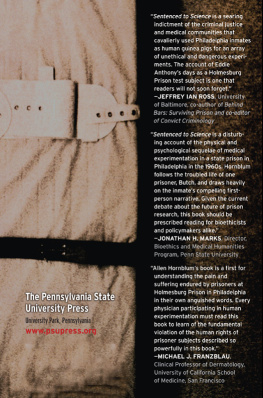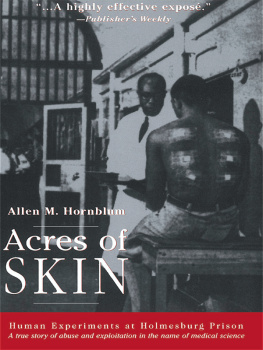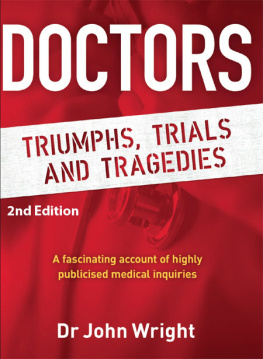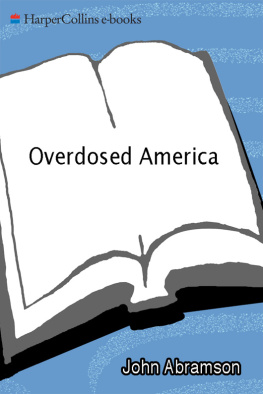Against Their Will
Against Their Will
The Secret History
of Medical Experimentation
on Children in Cold War America
Allen M. Hornblum,
Judith L. Newman,
and Gregory J. Dober

The author and publisher have provided this e-book to you for your personal use only. You may not make this e-book publicly available in any way. Copyright infringement is against the law. If you believe the copy of this e-book you are reading infringes on the authors copyright, please notify the publisher at: us.macmillanusa.com/piracy.
AGAINST THEIR WILL
Copyright Allen M. Hornblum, Judith L. Newman, and Gregory J. Dober, 2013.
All rights reserved.
For information, address St. Martins Press, 175 Fifth Avenue, New York, N.Y. 10010.
First published in 2013 by PALGRAVE MACMILLAN in the United Statesa division of St. Martins Press LLC, 175 Fifth Avenue, New York, NY 10010.
ISBN: 978-0-230-34171-5
Our eBooks may be purchased in bulk for promotional, educational, or business use. Please contact the Macmillan Corporate and Premium Sales Department at 1-800-221-7945, ext. 5442, or by e-mail at .
Library of Congress Cataloging-in-Publication Data
Hornblum, Allen M.
Against their will : the secret history of medical experimentation on children in cold war America / Allen M. Hornblum, Judith L. Newman, Gregory J. Dober.
pages cm
ISBN 978-0-230-34171-5 (hardback)
1. PediatricsResearchMoral and ethical aspectsUnited States.
2. ChildrenResearchMoral and ethical aspectsUnited States. 3. Human experimentation in medicineUnited StatesHistory20th century.
I. Newman, Judith L. II. Dober, Gregory J. III. Title.
RJ85.H67 2013
174.29892dc23
2012051032
A catalogue record of the book is available from the British Library.
Design by Letra Libre Inc.
First edition: June 2013
10 9 8 7 6 5 4 3 2 1
Printed in the United States of America.
To A. Bernard Ackerman
Whose career exemplified the highest
standards of ethics and medicine
Contents
ix
The Age of Heroic Medicine: At Their Best, Medical Men
Are the Highest Type Yet Reached by Mankind13
Eugenics and the Devaluing of Institutionalized Children:
The Elimination of Defectives23
World War II, Patriotism, and the Nuremberg Code:
It Was a Good Code for Barbarians43
Impact of the Cold War on Human Experimentation:
There Werent Any Guidelines as I Can Recall53
Vaccines: Institutions for Hydrocephalics and Other
Similar Unfortunates81
Skin, Dietary, and Dental Studies: The Kids in These
Institutions Are So Desperate for Affection111
Radiation Experiments on Children: The Littlest Dose of
Radiation Possible125
Psychological Treatment: Lobotomy... Is Often the
Starting Point in Effective Treatment151
Reproduction and Sexuality Experiments: They Treated
Those Girls Just as if They Were Cattle193
Research Misconduct: Science Actually Encourages
Deceit211
Acknowledgments
We are indebted to the many people who enabled us to chronicle this piece of medical history. In particular, we would like to thank the many former test subjects, relatives of test subjects, and physicians and medical researchers who endured our numerous meetings and phone conversations, shared their recollections with us, answered endless questions, and allowed us access to their privates papers, official documents, and photographs.
We would especially like to thank former State Boys Charlie Dyer, Gordon Shattuck, Austin LaRocque, and Joe Almaida for their recollections of Fernalds Science Club and tour of the institution. Also providing her time, her collection of documents, and her reflections on the Fernald story was Doe West, who chaired the Massachusetts task force that investigated the radiation experiments that occurred there. We also owe a debt of gratitude to Ted Chabasinski and Karen Alves for meeting with us and sharing their recollections about painful events that happened to them or to close family members.
Jessie Bly and Pat Clapp also deserve our thanks for taking the time to recall memories that became key aspects of the book. To doctors such as A. Bernard Ackerman, Hilary Koprowski, Constantine Maletskos, Cyril Wecht, Chester Southam, Avir Kagan, Jim Ketchum, Enock Callaway, and the many others who contributed to our understanding of medical research during the Cold War, we also owe a debt of gratitude.
We would like to thank the many librarians and archivists who assisted in our lengthy hunt for documents, journal articles, and the private papers of scores of physicians and medical researchers. To those helpful staffers at Harvards Countway Medical Library, the American Philosophical Society, the New York University Medical Archives, the University of Pennsylvania Medical Library, George Washington University Medical Archive, the Bancroft Library at the University of California (Berkeley), the Swarthmore University Archive, the College of Physicians of Philadelphia, the National Archives (College Park, Maryland), the Library of Congress, the Mandeville Library of the University of California (San Diego), the University of Pittsburgh Archives, and the Pennsylvania State Archive, we owe you a debt of gratitude.
Others deserving a note of appreciation for assisting us with procuring documents or better understanding the issues and events of this period include Shannon Fox, Alan Milstein, Joe Levin, Janet Albert-Herman, Eric Borseth, Jeff Kaye, Margot White, Paul Lombardo, Vera Sharav, Fred Misilo, Paul Lurz, Jack Power, William L. Rosenberg, and Joseph K. McLaughlin.
We would also like to thank the Penn State ACURA Research Program and students Sharayah Wilt, Rada Khurgun, Sheba Favardin, and Karishma Minocha for their support and assistance in gathering relevant documents. We also appreciate the research stipends from the Rubin Fund and a Penn State Development Grant.
Another individual deserving our thanks is the late Sidney Newman who consistently throughout his long life saw children with mental challenges as most deserving of respect and care. He taught integrity by example.
And lastly we would like to thank our agent Jill Marsal and our editor at Palgrave, Luba Ostashevsky, for recognizing the importance of this work and for their help in guiding us to the publication finish line.
Introduction
Theyd Come for You at Night
It is better for all the world, if instead of waiting to execute degenerate offspring for crime, or to let them starve for their imbecility, society can prevent those who are manifestly unfit from continuing their kind.
Oliver Wendell Holmes
They told me I shouldnt have kids and I shouldnt get married. They said I might have a defect, that I had something wrong with me. They said, You arent stabilized and you shouldnt have kids because of what you have. I didnt know what I had. Nobody ever told me. I thought I was like everyone else. But I was only a kid, I had no interest in getting married; I was only fourteen years old. And to tell you the truth, I just wanted out of there, recalls Charles Dyer of his unhappy days growing up in a series of bleak Massachusetts institutions. It was 1954, and America was in the thick of the Cold War. Communism was spreading around the world. The Korean War had just ended; the ArmyMcCarthy hearings dominated political discussions in Washington.
It was also a significant time for young Charlie. He had just completed his first year in a large, forbidding state institution that was once known as the Massachusetts School for Idiotic and Feeble-Minded Youth. Over one hundred years after its founding as a refuge for high-functioning disabled children, it was still home to what many people at the time considered a motley collection of societal refusedefective humans who were commonly referred to as morons, mongoloids, and gargoyles, not to mention your everyday idiots and lunatics. By todays standards, however, some, like Charlie, would seem little different from the rest of us.
Next page

